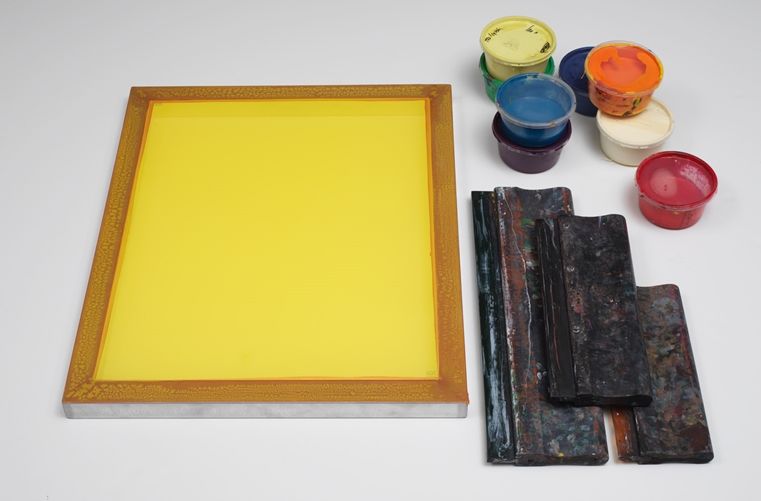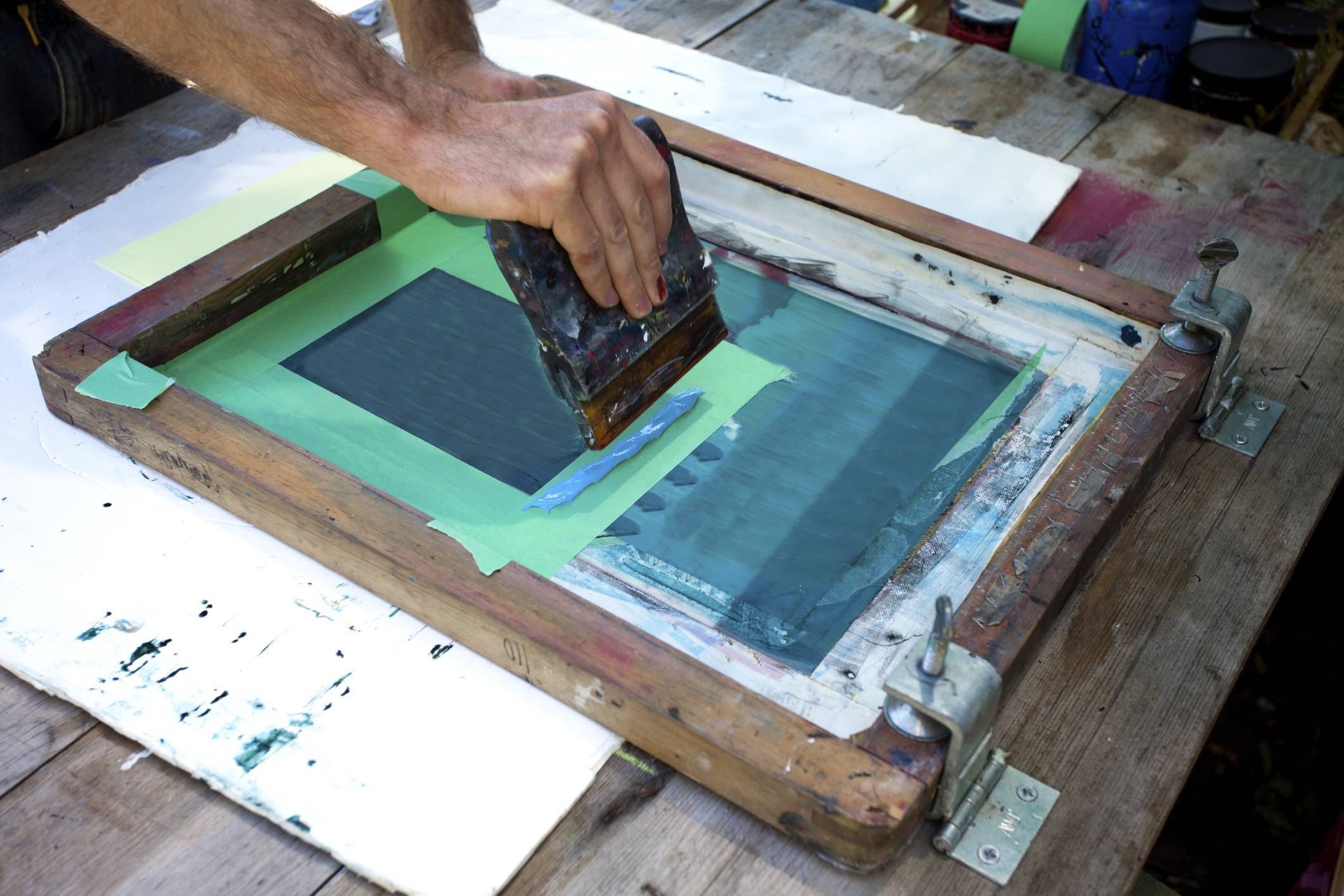ChatGPT said: Everything you need to know about 10:9 Design LLC Company and their screen printing services
The Important Overview to Understanding Screen Printing and Its Versatile Utilizes
Screen printing has an abundant background that goes back to old times, developing right into a sophisticated method utilized across numerous industries today. This guide checks out the intricacies of the screen printing process, outlining its applications in advertising and marketing, home, and style design - 10:9 Design Screen Printing Texas. Recognizing these principles can open up innovative capacity for both industrial and creative jobs. The following areas will expose crucial pointers and strategies to enhance one's screen printing ventures
The Background of Screen Printing
Although screen printing has origins that map back centuries, its advancement shows the technical and creative innovations of numerous societies. Originating in ancient China, the strategy was at first used for enhancing fabrics and later infect Japan, where it came to be indispensable to Ukiyo-e woodblock printing. The technique moved to Europe in the 18th century, where it gained appeal among craftsmens and business printers. The development of picture emulsion in the 20th century reinvented screen printing, permitting even more elaborate styles and greater performance. Artists like Andy Warhol better drove its popularity, utilizing the medium to create famous works that mixed commercialism and art. By the late 20th century, screen printing had developed itself as a functional method, used in style, marketing, and art. Today, it remains to progress, integrating electronic innovation and increasing its applications throughout various markets.
The Screen Printing Refine Explained
Screen printing changes creative visions into tangible styles via a series of exact actions. A photo is created and then transferred onto a screen, commonly made of great mesh fabric stretched over a framework. A light-sensitive solution is put on the screen, which is revealed to light, hardening in areas not covered by the image. After rinsing the unhardened emulsion, a stencil is developed.
Next off, the screen is placed over the substrate, whether it be fabric, paper, or an additional material. Ink is then pushed through the open areas of the stencil using a squeegee, depositing the style onto the substrate below. This process can be repeated for multiple colors, calling for separate screens for each shade. The published thing is healed making use of warm to ensure the ink adheres correctly, resulting in a long lasting, lively style ready for usage.
Kinds of Screen Printing Techniques

Additionally, specialty methods, such as discharge screen printing, remove color from the textile to develop softer prints, while foil screen printing applies metallic aluminum foil to attain a glossy finish (10:9 Design Embroidery). Each strategy provides distinct qualities, accommodating different innovative demands and manufacturing scales, ultimately increasing the possibilities within the screen printing domain
Applications of Screen Printing in Numerous Industries

In addition, the signage and advertising fields use screen printing for producing distinctive screens and banners. This approach allows for bold colors and detailed layouts that capture interest. In electronic devices, screen printing is used for applying conductive inks to circuit boards, essential for part connections. The home decoration sector accepts screen printing to create unique styles on textiles and wall art. Generally, screen printing functions as an essential device throughout varied areas, improving products with customized and visually appealing graphics.
Tips for Effective Screen Printing Projects
While taking on a screen printing task, mindful interest to detail can considerably enhance the last end result. Selecting top notch products is vital; this consists of the screen, inks, and substratums. Using proper mesh matters can affect ink deposition and detail resolution. Preparation is similarly vital; detailed cleansing of displays and appropriate exposure times guarantee crisp prints.
Next off, exact enrollment is vital for multi-color prints. Using positioning devices can aid achieve precise layering. Additionally, testing prints on scrap materials before manufacturing aids identify possible concerns without throwing away resources.

Frequently Asked Inquiries
What Products Are Best for Screen Printing on Material?
Cotton and polyester blends are perfect for screen printing on textile because of their durability and ink absorption. Furthermore, specialized materials like silk or canvas can generate distinct appearances and finishes, boosting the overall style top quality.
How Do I Clean and Maintain Screen Printing Devices?
To clean and maintain screen printing equipment, one need to regularly clean displays with appropriate solvents, check mops for wear, lubricate moving components, and shop all products in a completely dry, dust-free environment to extend their life-span.
What Are the Ecological Impacts of Screen Printing?
Screen printing can have considerable ecological influences, consisting of chemical waste from solvents and inks, water usage during cleaning processes, and energy usage. Lasting techniques and green products are necessary for minimizing these negative effects.
Can Screen Printing Be Done at Home Efficiently?
Screen printing can be efficiently done at home with the appropriate products and strategies. Enthusiasts can produce high quality prints, though success depends upon their ability degree, tools, and understanding of the procedure entailed.
What Are the Expenses Connected With Starting a Screen Printing Business?

Beginning a screen printing company involves prices for equipment, materials, and workspace. First expenditures usually range from a couple of hundred to several thousand dollars, relying on the scale, quality of equipment, and preferred manufacturing capability.
Screen printing has an abundant history that dates back to old times, progressing into an advanced strategy utilized across numerous markets today. An additional technique, rotary screen printing, uses round displays, promoting continuous printing on material rolls, thus boosting efficiency for massive manufacturings. Additionally, specialized strategies, such as discharge screen printing, remove color from the textile to create softer prints, while aluminum foil screen printing uses metallic foil to accomplish a glossy finish. In the fashion market, screen printing is extensively used to produce vivid layouts on clothing, making it possible for brands to showcase their special designs. Cotton and polyester blends are optimal for screen printing on textile due to their sturdiness and ink absorption.